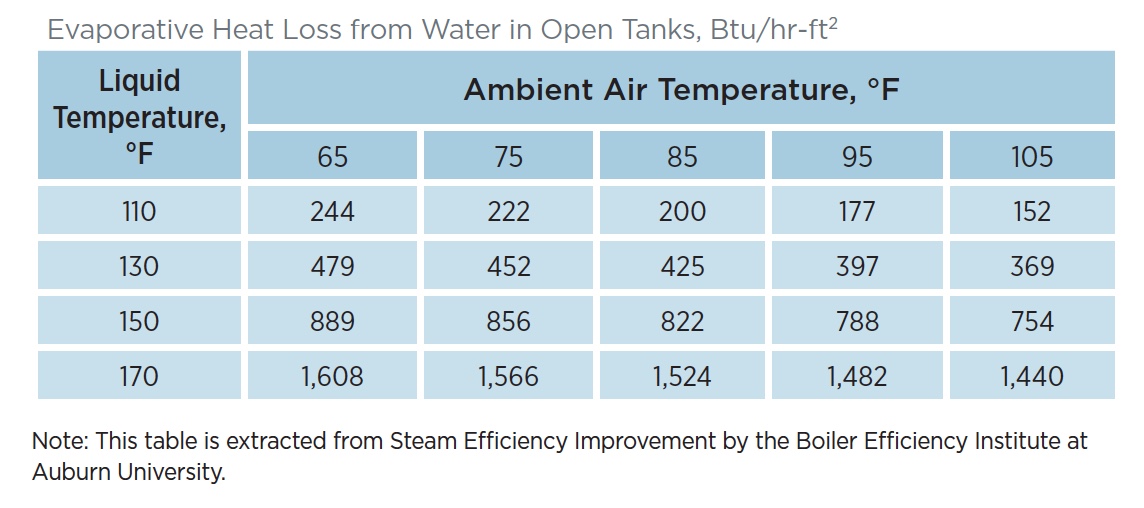Open vessels that contain heated liquids often have high heat loss due to surface evaporation. Both energy and liquid losses are reduced by covering open vessels with insulated lids. The table below provides an estimate of the evaporative heat loss per square foot (ft2) of uncovered vessel surface area for various water and dry ambient air temperatures. It is assumed that the ambient air is dry with no wind currents. A fan pulling air over the uncovered tank could more than double the heat losses.

Example
A rinse tank is 4 feet (ft) wide and 10 feet (ft) long. It is maintained at a constant temperature of 170°F. Determine the evaporative heat loss from the tank if the ambient temperature is 75°F.
- Area of Evaporating Surface = 4 ft x 10 ft = 40 ft(2)
- Total Heat Loss for Uncovered Liquid Surface = 1,566 Btu/hr-ft(2) x 40 ft(2) = 62,640 Btu/hr
Cover the Tank with an Insulated Top
Assume that the rinse tank is heated during two shifts per day, five days per week, and 50 weeks per year. What are the annual energy savings that may be obtained by covering the tank? What is the heating cost reduction in a plant where the cost of steam is $8.00 per million Btu ($8.00/MMBtu)? Assume that covering the rinse tank with an insulated lid effectively reduces the heat losses from the liquid surface to a negligible value.
- Annual Energy Savings = 62,640 Btu/hr x 2 shifts/day x 8 hr/shift x 250 days/yr = 250 MMBtu
- Annual Heating Cost Reduction = 250 MMBtu/yr x $8.00/MMBtu = $2,000
Heat Loss Detail
Eliminating internal heat gains will also result in electrical energy savings if the open tanks are located within a conditioned space.
Heat losses are a strong function of both wind velocity and ambient air humidity. A wind velocity of 3 miles per hour will more than double the rate of heat loss from a tank.
Radiation heat transfer is a secondary source of tank surface heat losses. Radiation losses increase from 90 Btu/hr-ft2 at a liquid temperature of 110°F to 290 Btu/hr-ft2 at 190°F.
This tip is provided by the U.S. Department of Energy – Energy Efficiency and Renewable Energy and originally published by the Industrial Energy Extension Service of Georgia Tech. For suggested actions and resources, click to download the complete US Department of Energy Tip Sheet.

